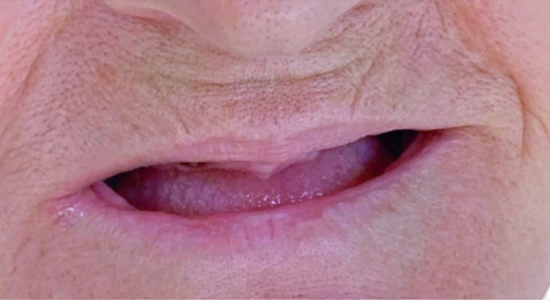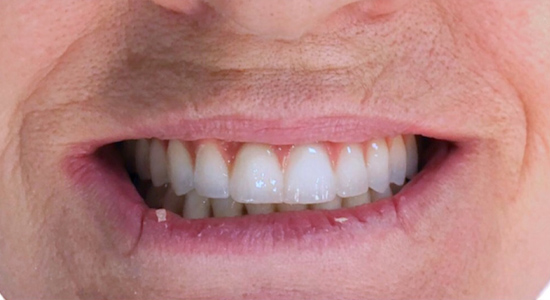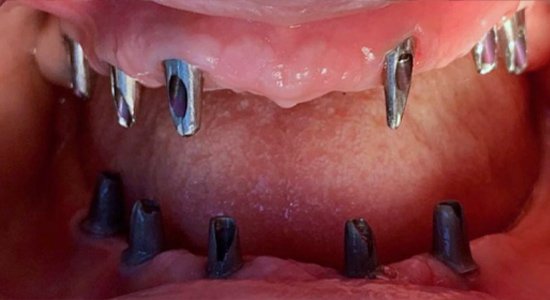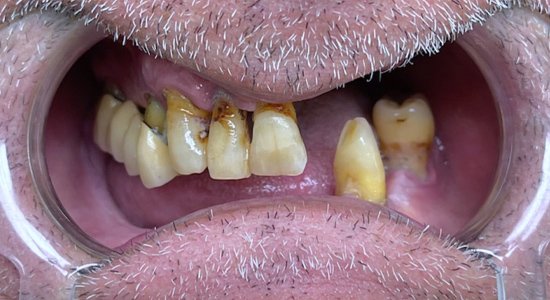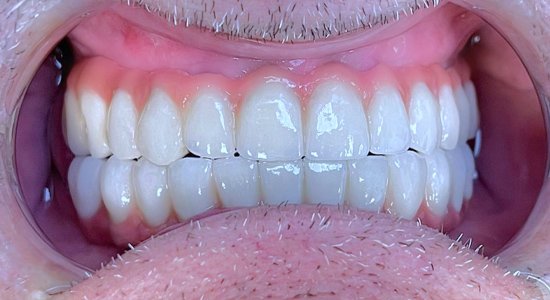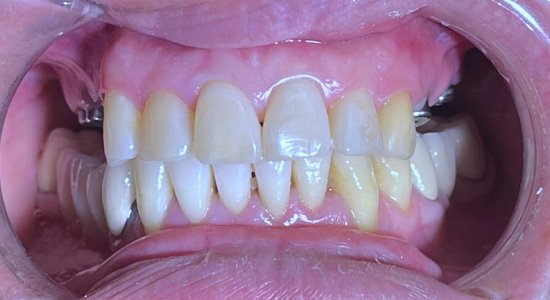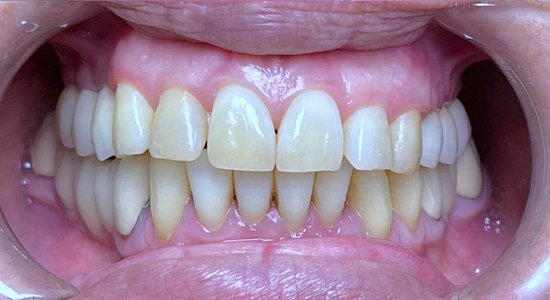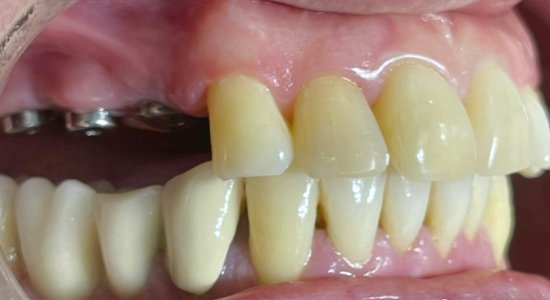DENTAL IMPLANTS
The Home of Dental Implants
Are you missing one or more teeth? Is your smile not what it used to be? Are missing teeth causing you eating problems? Do you want to eat like you used to and have perfect aesthetics again?
You can resolve your situation at our clinic with premium dental implants guaranteed for life. When a tooth is missing, the best solution is to place a dental implant. If several consecutive teeth are missing, it’s not necessary to place an implant for each tooth. The oral surgeon will determine the exact therapy based on your first free visit to our clinic!
There are situations where tooth loss is unavoidable. Although some may not think much about replacing missing teeth, it is often vital for your health and confidence to maintain full functionality and comfort of your mouth.
Missing teeth can affect your appearance, chewing, and speech. Leaving an empty space in your mouth after losing a tooth can cause the other teeth to shift and lead to other problems like jawbone deterioration.
At Grand Dental Hospital, our implantologists offer highly durable dental implants for patients seeking a long-term solution for missing teeth.

Rezervo Konsultë Falas
Benefits
of Dental Implants
Rezervo Konsultë Falas
Grand Dental Hospital is the Best Dental Clinic in Albania for Dental Implants with the Highest Success Rate
Guaranteed to
Last a Lifetime
A dental implant is a titanium post surgically placed in the jawbone to support a replacement tooth. Unlike removable dentures or bridges, dental implants provide superior stability, functionality, and will not affect your other healthy teeth. Your implants will mimic the strength of your natural teeth and preserve the vitality of your jawbone.
PAINLESS DENTAL IMPLANTS
A dental implant is the best solution for replacing one or more missing teeth. The “artificial” titanium root, after osseointegration, allows you to install the dental crown, giving you a wonderful new smile. Before starting implant therapy, a 3-dimensional x-ray will be performed to assess the consistency and density of the bone where the implant will be placed. In the absence of natural bone, artificial bone transplantation will be facilitated. The operation will be performed with local anesthesia in just a few minutes.
Implants are contraindicated in cases of reduced immune capacity, corticosteroid treatments, blood clotting issues, severe endocrine diseases, rheumatoid disorders, bone diseases, liver cirrhosis, etc.
Locally, they are contraindicated in osteomyelitis, radiotherapy, recurrent mucosal diseases, poor hygiene, etc. They are made from a type of metal biocompatible with bone (titanium). They come in different lengths and diameters depending on the anatomical conditions where they will be placed.
The surface is threaded and may or may not be coated with hydroxyapatite (HA). According to EC directives for medical products, implants are sterilized with gamma rays, and packaging is in double glass bottles. After placing the implants, it is essential for the patient to maintain excellent oral hygiene. The surgical procedure is performed in one session, while the prosthetic procedure (placing the teeth) is done at least three months later.
Rezervo Konsultë Falas

What is a Dental Implant?
Almost all implants manufactured today are made of titanium or its alloys, materials that have proven to be very well tolerated by bone over the years. The term “osseointegrated implants” is widely used to describe dental implants that achieve a close bond with the bone to support the replacement tooth.
A dental implant is essentially a replacement for a natural root and is generally cone or cylinder-shaped. Each implant is placed carefully and precisely in the pre-determined location. The primary goal during the installation of each implant is to achieve immediate close contact with the surrounding bone. This creates primary stability, which over time is enhanced by further bone growth into the microscopic roughness of the implant surface.
To support the replacement tooth, dental implants typically have an internal threaded canal that allows the fitting of various components. These components provide the foundation for the crowns, bridges, and dentures that will be placed on top.
How Many Teeth Can an Implant Support?
All common forms of tooth replacement, such as dentures or bridges, can be replaced with dental implants. If you are missing a single tooth, one implant is all you need to replace it. Larger gaps created by two, three, or more missing teeth do not necessarily need to be restored with one implant for each missing tooth. However, the exact number of implants required will depend on the quality and volume of bone in each location where the implants will be placed.
Depending on the case, it is also possible to join natural teeth with implants using a conventional fixed bridge.
In the upper jaw, the bone is softer than in the lower jaw, so the minimum number of implants needed to replace 10-12 teeth is six.
What Else Can Be Achieved with Dental Implants?
If you are missing all the teeth in your lower jaw and are not ready for a full-implant solution, a standard lower denture can be supported by two implants placed in the front area. The same solution can be applied to the upper jaw, but it requires more implants because the upper jawbone is softer.
A tooth can also be placed immediately after implantation. This can be applied in certain cases, but the patient must balance the shortened treatment time with the higher risk of implant failure.
Dental implants must adhere to a simple engineering principle: they should be placed on solid foundations in sufficient numbers to avoid overloading. At the same time, each implant must be accessible for cleaning to ensure healthy surrounding bone and gums.
Who is Suitable for Dental Implants?
If you have good oral hygiene, dental implants will certainly work for you. However, habits like alcohol consumption and smoking can increase the number of problems associated with both primary healing and the longevity of the implants.
When a tooth is lost or extracted, a significant portion of the surrounding bone is lost or resorbed. This loss can be very pronounced in the first few months and is individual. Sometimes, to minimize bone loss after tooth extraction, an immediate implant or one placed a few weeks later is used.
Many patients report that their dentures become increasingly loose and do not stay in place as well as they used to. In the first six months to a year after tooth extraction, bone loss is rapid, which affects denture stability. After this period, the forces of chewing cause the slow resorption (reduction) of the jawbone. Many patients often undergo procedures to reline their denture support. However, patients who have worn dentures for a long time have little bone left to place implants. The presence of implants helps preserve the alveolar bone. The force exerted by the implant makes it stronger and denser in that area.
An implant can fail immediately after the procedure or some time after the fixed prosthetic is placed on it. Generally, a failed implant does not cause any discomfort.
Failures are not always easy to accept, but if we agree on this type of treatment, we must be prepared for such an eventuality.
In general statistics, the failure rate is described as much less than 5% of cases.
In our clinic’s statistics since 2005, implant failures are currently at 2%.
It is very beneficial to discuss with your doctor how treatment planning impacts the likelihood of implant failure
In typical cases, from the moment the implants are placed to the moment the teeth are placed on them, the time can vary from 6 weeks to 6 months. In good bone, the process can be quicker, whereas in softer bone, the time to place the teeth can extend beyond six months.
If there is no reason to shorten the treatment time, then we should be prepared to wait—no one loses an implant by being patient and allowing nature to take its course.
The correctness and precision of the placement of the prosthetic (teeth) and the success of each stage in this phase will be the main factors determining the performance of the implants. If the implants are surrounded by normal gingiva and daily, diligent cleaning is performed by you, this will directly impact their longevity.
Well-maintained implants placed in the right bone can have a long life, potentially for a lifetime.
You should obtain information on how long the treatment will take, how many implants are necessary in your case, whether it is possible to place implants in your jaws, and how and when payments should be made. These details should be clarified before the procedure.
We are all aware of the value of local anesthesia used in daily dental practice. Implant placement is done under the same anesthesia and lasts from 30 minutes for placing a single implant to several hours for more complex procedures like multiple implants or bone grafts. It is normal to have some swelling after the procedure. Stitches are removed a week later. During the first few days, it is normal to feel some discomfort and slight pain. It is important to follow all post-procedure instructions given. If you are in doubt, do not hesitate to ask your doctor.
It is not always possible to place implants due to insufficient bone in the jaws. In the upper jaw, it is possible to increase the amount of bone by creating new bone in the maxillary sinus. This procedure is called “sinus augmentation.” A skilled surgeon can achieve predictable results in this area, and without the success of this technique, it would be impossible for many patients to have implants in this part of the mouth where teeth are often lost. Bone grafting. There are many ways to add bone to an area where it is needed. The most common is taking a piece of bone from another part of the body and placing it where it is needed.





